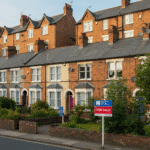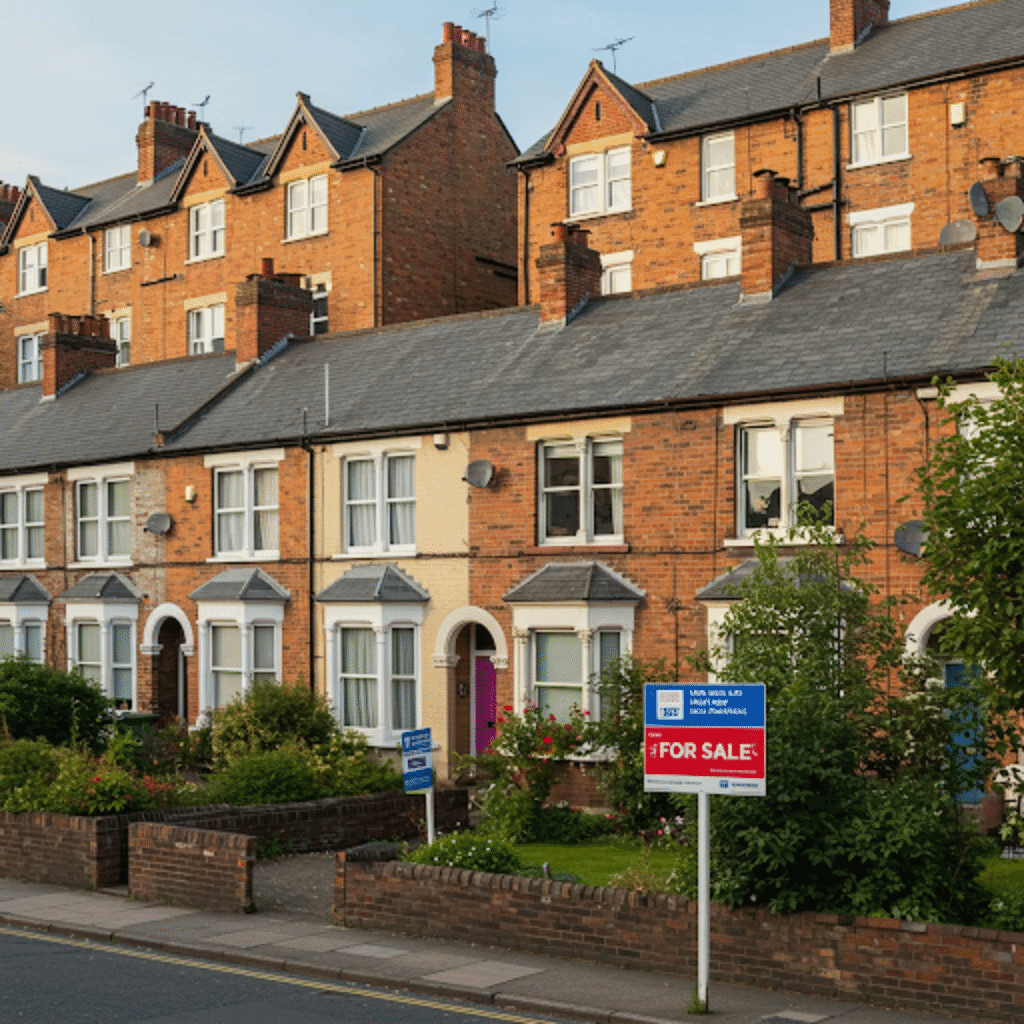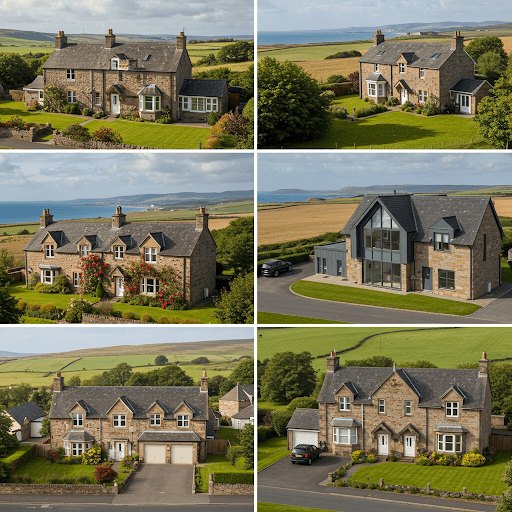
Finding Your Perfect Pad: An In-Depth Guide to Houses for Sale in Liverpool
Liverpool. The very name conjures images of iconic music legends, world-class football, historic docks buzzing with life, and a famously warm welcome. But beyond the headlines and the tourist trails, Liverpool is a thriving, dynamic city offering a diverse and increasingly desirable place to call home. If you’re exploring houses for sale in Liverpool, you’re embarking on a journey into a city that seamlessly blends rich history with ambitious regeneration, cultural vibrancy with surprising affordability, and urban energy with accessible green spaces and coastline.
For decades, Liverpool has been undergoing a remarkable transformation. From the revitalisation of the Albert Dock, now a UNESCO World Heritage site brimming with museums, galleries, bars, and restaurants, to the ongoing development projects breathing new life into former industrial areas, the city radiates confidence and opportunity. This regeneration hasn’t just polished the city’s image; it’s created jobs, improved infrastructure, and made Liverpool an increasingly attractive proposition for homebuyers from across the UK and beyond.
Whether you’re a first-time buyer seeking an affordable step onto the property ladder, a growing family looking for more space and good schools, a young professional drawn by the city centre buzz, or an investor eyeing potential returns, Liverpool’s varied housing market has something to offer. This guide will navigate you through the key aspects of buying property in this exciting northern powerhouse.

Why Choose Liverpool? More Than Just a Name
What makes Liverpool stand out in the crowded UK property market? Several factors contribute to its enduring appeal:
- Affordability: Compared to London and many cities in the South East, Liverpool offers significantly more bang for your buck. Property prices, while rising, remain relatively accessible, allowing buyers to get more space or a better location for their budget. This affordability extends to the general cost of living, making it an attractive financial proposition.
- Culture and Heritage: Liverpool’s cultural pedigree is undeniable. Home to The Beatles, numerous world-class museums (including Tate Liverpool and the World Museum), vibrant theatres, and a legendary music scene that continues to thrive, there’s always something happening. The city’s maritime history is palpable, especially around the stunning waterfront.
- Regeneration and Investment: Significant investment continues to pour into the city. Projects like Liverpool Waters aim to transform dockland areas, while developments in the Knowledge Quarter bolster its reputation as a centre for science, health, and technology. This ongoing development signals a positive future trajectory for the city and its property values.
- Connectivity: Liverpool boasts excellent transport links. Lime Street Station connects the city to major UK destinations, John Lennon Airport offers international flights, and a comprehensive local network of trains and buses makes getting around straightforward. Motorway access is also convenient for commuters.
- Green Spaces and Coastline: Despite its urban character, Liverpool offers ample green retreats. Sefton Park, with its boating lake and Palm House, is a jewel, while Calderstones Park offers ancient history and gardens. Furthermore, the nearby coastline, particularly Crosby Beach with Antony Gormley’s ‘Another Place’ statues, and the dunes of Formby, provide refreshing escapes.
- Friendly Atmosphere: Scousers are renowned for their warmth, humour, and welcoming nature. This strong sense of community adds immeasurably to the quality of life in the city.
- Educational Hub: With several highly-regarded universities and colleges, Liverpool has a large student population, contributing to its youthful energy and creating a strong rental market for investors.
Understanding the Liverpool Property Landscape
The Liverpool property market is dynamic. Like much of the UK, it has experienced fluctuations, but overall demand remains strong, particularly in desirable areas. Prices have seen steady growth, often outpacing national averages in percentage terms, though starting from a lower base than many southern cities.
The market caters to a wide range of budgets and preferences. You’ll find everything from modern city centre apartments and traditional Victorian terraces to spacious semi-detached and detached family homes in leafy suburbs. New build developments are also increasingly common, offering contemporary living options.
Key trends include strong demand for family homes in areas with good schools and amenities, continued interest in city centre apartments from young professionals and investors, and growing popularity in well-connected suburbs offering a balance between urban access and a quieter lifestyle. Regeneration zones often attract significant interest due to potential future value growth.
A Tour of Liverpool’s Neighbourhoods: Finding Your Area
Liverpool is a city of distinct neighbourhoods, each with its own character and appeal. Choosing the right area is crucial. Here’s a glimpse into some of the most popular spots:
City Centre (L1, L2, L3)
- Vibe: Bustling, convenient, modern, vibrant.
- Property Types: Predominantly apartments, ranging from conversions in historic buildings to sleek new builds. Some pockets of older housing exist but are rarer.
- Who it Suits: Young professionals, students, investors, those who crave being in the heart of the action.
- Pros: Unbeatable access to shops, restaurants, nightlife, cultural attractions, and transport hubs.
- Cons: Can be noisy, less green space, premium prices for the location, parking can be challenging and expensive.
Aigburth & Lark Lane (L17)
- Vibe: Bohemian, leafy, vibrant, community-focused.
- Property Types: Large Victorian terraces, semi-detached houses, some apartments.
- Who it Suits: Families, young professionals, creatives.
- Pros: Proximity to Sefton Park and Calderstones Park, independent shops and cafes on Lark Lane, good schools, strong community feel.
- Cons: Highly desirable, so prices can be higher than average for Liverpool; parking can be tight.
Allerton & Mossley Hill (L18)
- Vibe: Affluent, leafy, established, desirable.
- Property Types: Substantial semi-detached and detached homes, some large terraces, character properties.
- Who it Suits: Families seeking good schools, established professionals.
- Pros: Excellent schools, attractive housing stock, good local amenities on Allerton Road, close to parks, good transport links.
- Cons: Among the more expensive areas in Liverpool.
Woolton (L25)
- Vibe: Village feel, historic, charming, community-oriented.
- Property Types: Mix of cottages, terraces, semis, and detached houses, including period properties.
- Who it Suits: Families, downsizers, those seeking a quieter pace with character.
- Pros: Picturesque village centre, local amenities, good schools, historic links (including Beatles connections), strong community spirit.
- Cons: Can feel slightly further out from the city centre for some.
Crosby (L23)
- Vibe: Coastal, suburban, relaxed, family-friendly.
- Property Types: Variety of housing, including large detached and semi-detached homes, particularly near the coast.
- Who it Suits: Families, those who love the coast and outdoors.
- Pros: Crosby Beach and the famous statues, good schools, local amenities, direct train link to the city centre.
- Cons: Further from the city centre than southern suburbs.
Formby (L37)
- Vibe: Affluent, coastal, secluded, nature-focused.
- Property Types: Primarily large detached and semi-detached houses, often on generous plots.
- Who it Suits: High-earning professionals, families, retirees, nature lovers.
- Pros: Beautiful beach, National Trust pine woods and red squirrel reserve, village atmosphere, sought-after schools, exclusivity.
- Cons: One of the most expensive areas linked to Liverpool, commuting time to the city centre.
Wavertree (L15)
- Vibe: Diverse, lively, well-connected, popular with younger demographics.
- Property Types: Predominantly Victorian terraces, many converted into flats or HMOs (Houses in Multiple Occupation).
- Who it Suits: Students, young professionals, first-time buyers, investors.
- Pros: Good transport links (Wavertree Technology Park station), proximity to universities, vibrant high street (Smithdown Road), relatively affordable.
- Cons: High density of student housing in some parts, parking can be difficult.
Anfield & Everton (L4, L5, L6)
- Vibe: Traditional working-class roots, undergoing regeneration, football-centric.
- Property Types: Mainly terraced housing, often very affordable.
- Who it Suits: First-time buyers on a budget, investors, football fans.
- Pros: Low property prices, proximity to stadiums, ongoing regeneration projects improving housing and amenities, strong community identity.
- Cons: Can suffer from match-day congestion, historically faced socio-economic challenges though improving.
Kensington (L6, L7)
- Vibe: Diverse, close to universities and the Knowledge Quarter, investment potential.
- Property Types: Mainly terraced houses, popular for student lets and HMOs.
- Who it Suits: Students, investors, budget-conscious buyers.
- Pros: Proximity to universities and Royal Liverpool Hospital, affordable property prices, good transport links to the city centre.
- Cons: High density of rental properties, some streets can appear less maintained than others.
Types of Properties Available
Liverpool’s architectural heritage and development patterns mean a wide variety of property types are available:
- Terraced Houses: Particularly Victorian and Edwardian terraces are abundant in many areas like Wavertree, Aigburth, Anfield, and Kensington. They offer character and are often more affordable entry points.
- Semi-Detached Houses: Common in suburban areas like Allerton, Mossley Hill, and Crosby, often dating from the 1930s onwards, popular with families.
- Detached Houses: Found in more affluent areas like Woolton, Formby, and parts of Allerton and Mossley Hill, offering more space and privacy.
- Apartments/Flats: Dominate the city centre and docklands, ranging from studio flats to luxury penthouses. Conversions are also found in larger period houses in areas like Aigburth.
- New Builds: Increasingly available across the city, both apartments and houses, offering modern amenities and energy efficiency.
Navigating the Buying Process in Liverpool
The process of buying a house in Liverpool follows the standard English legal system. Here’s a simplified overview:
- Assess Affordability: Determine your budget, factoring in deposit, mortgage possibilities, Stamp Duty Land Tax (SDLT), solicitor fees, survey costs, and moving expenses. Get a mortgage ‘Agreement in Principle’ (AIP).
- Find a Property: Search online portals (like Rightmove, Zoopla), register with local Liverpool estate agents, and define your desired area and property type.
- Viewings: Arrange and attend viewings. Visit properties multiple times and at different times of day if possible. Explore the local area thoroughly.
- Make an Offer: Once you find a suitable property, make a formal offer through the estate agent. This is usually ‘subject to contract’ and survey.
- Instruct Professionals: Appoint a solicitor or conveyancer to handle the legal work and a surveyor to assess the property’s condition. Choose professionals familiar with the Liverpool market if possible.
- Mortgage Application: Formally apply for your mortgage.
- Surveys and Searches: Your solicitor will conduct legal searches (e.g., local authority, environmental). Your surveyor will inspect the property (ranging from a basic Mortgage Valuation to a full Structural Survey).
- Negotiation: Issues raised by the survey might lead to renegotiation of the price.
- Exchange of Contracts: Once mortgage offer, searches, and survey are satisfactory, and both parties are ready, contracts are formally exchanged. At this point, the agreement becomes legally binding, and you pay your deposit.
- Completion: This is the final step, usually a week or two after exchange. The remaining funds are transferred, you receive the keys, and the property is legally yours.
Tips for Buying Success in Liverpool
- Do Your Neighbourhood Research: Spend time in areas you’re considering. Visit cafes, walk around, check out local shops, and assess the commute.
- Think Long Term: Consider potential regeneration plans, school catchment areas (even if you don’t have children yet), and transport improvements that could affect future value.
- Use Local Experts: A good Liverpool-based estate agent and solicitor can provide invaluable local knowledge.
- Be Prepared for Competition: Desirable properties in popular areas often attract multiple offers. Be ready to act quickly and have your finances in order.
- Factor in Potential Work: Older properties, particularly terraces, might require renovation or updating. Budget accordingly.
- Understand Leasehold vs. Freehold: Many apartments are leasehold, meaning you own the right to occupy for a set period and may pay ground rent and service charges. Houses are typically freehold, meaning you own the building and the land it stands on outright. Understand the implications.
Liverpool as an Investment Opportunity
Liverpool remains a popular city for property investors. The large student population creates consistent demand for rental properties, particularly in areas like Kensington, Wavertree, and parts of the city centre. Buy-to-let yields can be attractive compared to other major UK cities, although regulations and tax changes need careful consideration.
Areas undergoing regeneration often offer potential for capital appreciation. However, thorough research into specific local plans, rental demand, and potential void periods is essential for any investment.
The Future of Liverpool’s Property Market
The outlook for Liverpool remains positive. Continued investment in infrastructure, the Knowledge Quarter, and waterfront developments should support job creation and attract more residents. While national economic factors will always play a role, Liverpool’s relative affordability and strong cultural identity provide a solid foundation.
Projects like the potential new Everton stadium at Bramley-Moore Dock and ongoing improvements to transport links are likely to further boost specific areas. As with any market, there will be ups and downs, but the long-term trajectory for Liverpool property appears promising.
Your Liverpool Home Awaits
Finding a house for sale in Liverpool opens the door to becoming part of a city with a unique soul. From the grandeur of its historic buildings to the buzz of its modern developments, the warmth of its people to the depth of its culture, Liverpool offers a compelling place to live.
By understanding the different neighbourhoods, the types of properties available, and the buying process, you can navigate the market effectively. Do your research, explore widely, and you could soon be unlocking the door to your own piece of this remarkable city. Good luck with your search!







